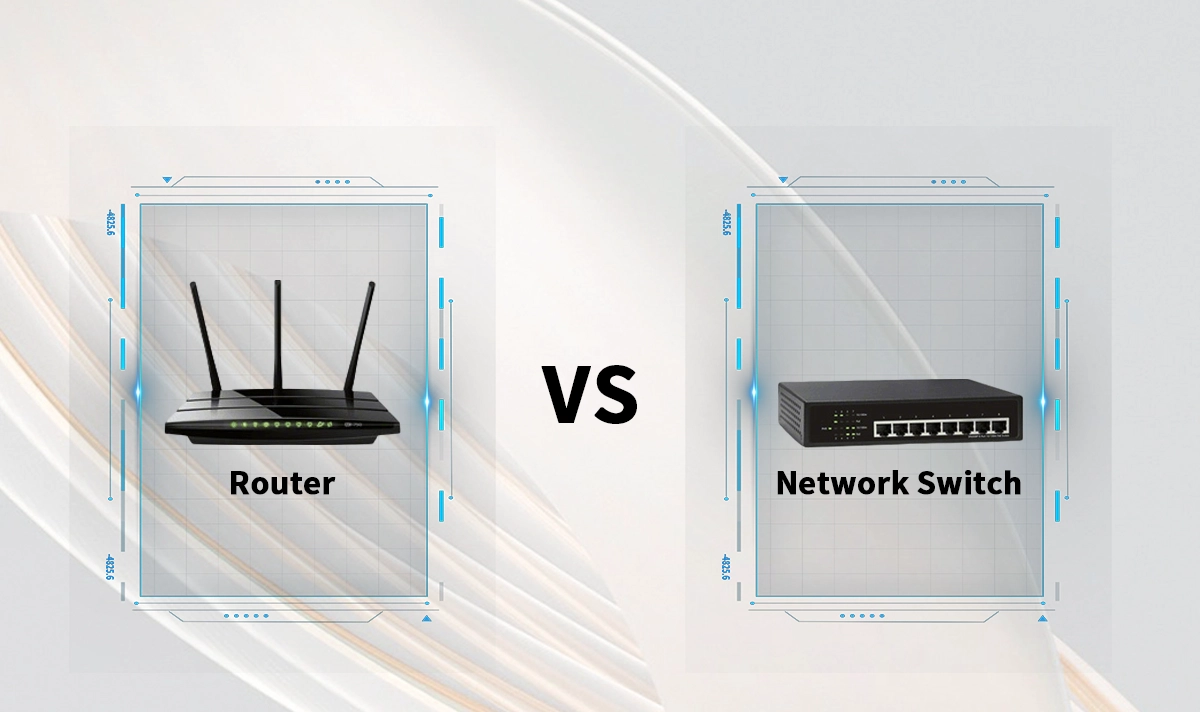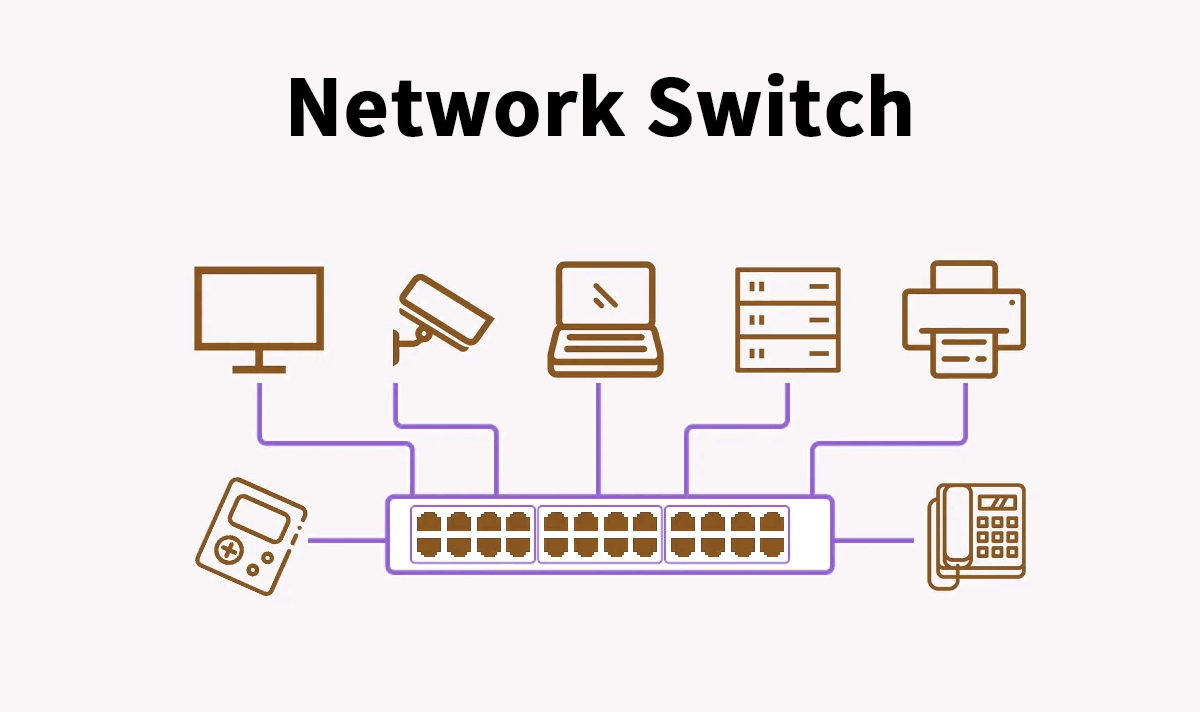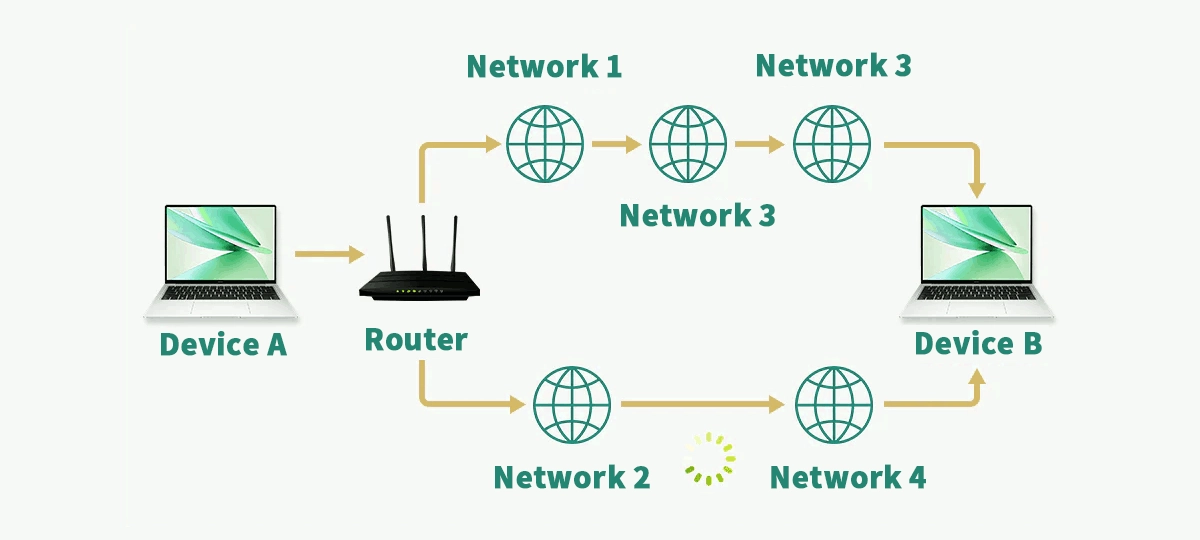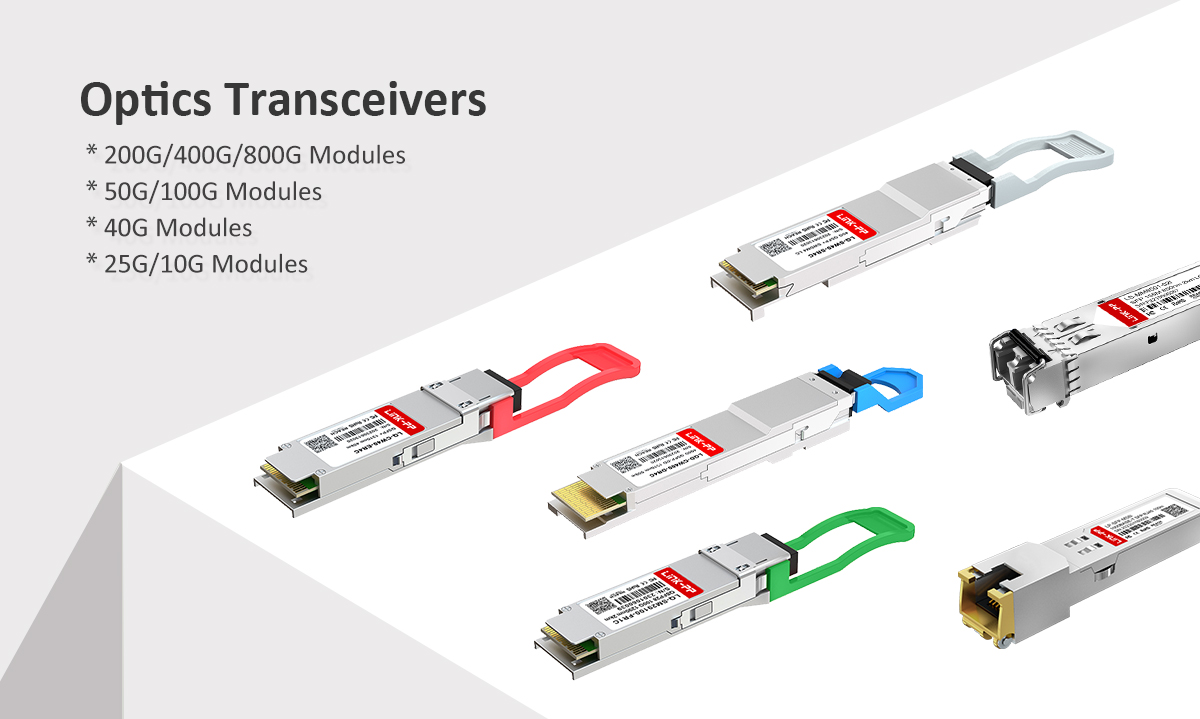
In the intricate dance of data that powers our connected world, two devices reign supreme at the foundation of virtually every network: the router and the switch. While often found nestled together in a rack or tucked behind a desk, their roles are fundamentally distinct. Confusing them is common, but understanding "router vs switch" is crucial for anyone designing, troubleshooting, or simply optimizing a network – whether it's a sprawling enterprise setup or your cozy home office.
This guide dives deep into the difference between router and switch, explaining their core functions, how they operate at different layers of the OSI model, and why you absolutely need both (or devices combining their features) for a functional network. We'll also touch upon the critical role of hardware quality, including compatible transceivers like LINK-PP optical modules, in ensuring peak performance.
📝 The Switch: Your Local Network Maestro
Imagine a bustling office. The switch acts like an incredibly efficient, intelligent mailroom within that single office building (your Local Area Network or LAN). Its primary job is connecting devices together on the same network segment and facilitating direct communication between them.

How it Works (OSI Layer 2 - Data Link):
Learns the MAC (Media Access Control) addresses of every device plugged into its ports (your computer, printer, server, IP phone). Think of a MAC address as a unique, physical serial number hardcoded onto your device's network card.
Builds and maintains a MAC address table, mapping which device is on which port.
When Device A (e.g., Computer) wants to send data to Device B (e.g., Printer) on the same LAN, the switch looks at the destination MAC address in the data frame.
It then intelligently forwards the data only out of the specific port where Device B is connected. This is called switching.
Key Characteristics of Switches:
Creates a Single Broadcast Domain: By default, broadcast traffic (messages meant for every device on the LAN) sent to the switch is flooded out all ports (except the one it came from).
Operates at High Speed: Modern switches (especially Gigabit Ethernet and beyond) offer very high internal bandwidth for fast local communication.
Microsegmentation: Each switch port is its own collision domain, meaning devices don't "talk over" each other on the wire like in old hubs. Full-duplex communication (send and receive simultaneously) is standard.
Types: Unmanaged (plug-and-play), Managed (offer VLANs, QoS, security features, monitoring), Layer 3 Switches (add basic routing capabilities - more on this later!).
📝 The Router: Your Network Navigator and Gateway
Now, imagine that same office needs to send mail outside the building – to another office across town or even internationally. That's the router's job. It connects different networks together and makes decisions about the best path for data to travel between them. Its most common role is connecting your Local Area Network (LAN) to the Wide Area Network (WAN), which is usually the Internet.

How it Works (OSI Layer 3 - Network):
Uses IP (Internet Protocol) addresses to identify devices and networks. An IP address is a logical address assigned to a device (like a postal address for a building).
Maintains a routing table, a map of known networks and the best paths (interfaces or next-hop routers) to reach them.
When Device A (on your LAN) wants to send data to a server on the Internet (a different network), the data packet goes to the router (your default gateway).
The router examines the destination IP address.
It determines the best path (route) for the packet to reach the destination network, often consulting its routing table and protocols (like OSPF, BGP).
It then forwards the packet out of the appropriate interface towards the next hop on that path. This is called routing.
Key Characteristics of Routers:
Connects Dissimilar Networks: Links your LAN (Ethernet) to your ISP's network (often via DSL, Cable, Fiber, or cellular using SFP modules).
Creates Separate Broadcast Domains: By default, a router blocks Layer 2 broadcast traffic. Each interface (e.g., LAN, WAN) is a separate broadcast domain. This is crucial for controlling traffic flow and improving security/performance in larger networks.
Performs Network Address Translation (NAT): Allows multiple devices on your LAN to share a single public IP address provided by your ISP.
Often Includes Firewall: Provides basic security by filtering incoming and outgoing traffic based on rules.
Can Assign IP Addresses (DHCP Server): Typically provides dynamic IP addresses to devices on the LAN.
Enables Communication Between VLANs: If you have a managed switch creating multiple VLANs (virtual LANs), a router (or Layer 3 switch) is needed for traffic to flow between those VLANs.
📝 Router vs Switch: The Crucial Differences Head-to-Head
Let's crystallize the difference between a router and a switch with this comparison table:
Feature | Switch | Router |
|---|---|---|
Primary Function | Connects devices within the same network (LAN) | Connects different networks (LAN to WAN, LAN to LAN) |
OSI Layer | Primarily Layer 2 (Data Link) | Primarily Layer 3 (Network) |
Address Used | MAC Address (Physical/Hardware Address) | IP Address (Logical Address) |
Domain Type | Creates a Single Broadcast Domain (by default) | Creates Multiple Broadcast Domains (per interface) |
Ports | Typically many ports (e.g., 8, 24, 48) for connecting LAN devices | Fewer ports: LAN ports (for switch/internal network), WAN port (for modem/ISP uplink). Enterprise routers have modular slots for SFP, SFP+, QSFP+ optics (e.g., LINK-PP SFP-10G-SR). |
Speed Focus | Optimized for high-speed local LAN traffic | Focuses on intelligent path selection across networks, WAN speed depends on uplink (often uses high-speed fiber modules) |
Network Scope | Local (LAN) - Single subnet | Inter-network (Between Networks) - Multiple subnets, WAN |
Key Protocols | Ethernet (802.3), STP, VLANs (if managed) | IP, ICMP, DHCP, NAT, RIP, OSPF, BGP |
Broadcasts | Forwards broadcasts within its LAN (floods) | Blocks broadcasts by default (separates domains) |
Traffic Handling | Forwards based on MAC address table (switching) | Routes based on IP address & routing table |
Typical Placement | Inside the network core/access layer | At the network edge (between LAN and WAN) |
📝 Why Hardware Quality & Compatibility Matters: The LINK-PP Advantage
Whether you're deploying a high-port-count switch for a data center, a powerful router for your enterprise edge, or a Layer 3 switch for your core, the physical hardware underpinning your connections is critical. This is especially true for fiber optic connections, which demand reliable, high-performance optical transceivers (like SFP, SFP+, QSFP28 modules) and cables.
The Importance of Compatible Optics:
Performance & Stability: Poor quality or incompatible modules can cause link flapping (intermittent disconnects), reduced speeds, increased errors, and even complete failure.
Vendor Lock-in: Many major network equipment vendors charge a significant premium for their branded optics.
Scalability: Needing to add 10G, 25G, or 100G links? You need readily available, cost-effective optics.
LINK-PP: Your Reliable Networking Partner
LINK-PP specializes in manufacturing high-quality, MSA-compliant optical transceivers designed to be fully compatible with major networking brands (Cisco, Juniper, Arista, HPE, etc.) without the hefty price tag of vendor-branded modules. Using genuine LINK-PP modules ensures:Seamless Integration: Plug-and-play functionality in supported switches and routers.
Guaranteed Performance: Reliable data transmission at rated speeds (e.g., 1G, 10G, 25G, 40G, 100G).
Rigorous Testing: Modules undergo thorough testing for interoperability and performance.
Cost Savings: Significant reduction in CapEx and OpEx compared to OEM optics.
Wide Selection: Support for various standards (SR, LR, ER, ZR) and distances over multimode (MMF) or single-mode fiber (SMF).

👉 Popular LINK-PP optical modules for Switches & Routers:
1G SFP: SFP-1G-SX (1000BASE-SX MMF), SFP-1G-LX (1000BASE-LX SMF)
10G SFP+: SFP-10G-SR (10GBASE-SR MMF), SFP-10G-LR (10GBASE-LR SMF), SFP-10G-T (10GBASE-T Copper) - Perfect for high-speed switch uplinks or router WAN interfaces.
25G SFP28: SFP28-25G-SR (25GBASE-SR), SFP28-25G-LR (25GBASE-LR)
40G QSFP+: QSFP-40G-SR4 (40GBASE-SR4)
100G QSFP28: QSFP28-100G-SR4 (100GBASE-SR4), QSFP28-100G-LR4 (100GBASE-LR4)
📝 Real-World Scenarios: How Routers and Switches Work Together
Home Network:
Your ISP's Modem connects to the WAN port of your Home Router.
The Router's LAN ports (often a small built-in 4-port switch!) connect to your devices (PC, Smart TV) or to an external Switch if you need more ports.
The Switch connects your other devices (gaming console, NAS, printer).
The Router manages the Internet connection (WAN), assigns local IPs (DHCP), performs NAT, acts as a firewall, and routes traffic between the LAN and the Internet. The Switch handles local traffic between your devices.
Small/Medium Business (SMB):
An Edge Router/Firewall connects to the ISP (via fiber using a LINK-PP SFP+ module like LS-SM3110-10C).
The Router connects to a core Layer 3 Switch.
The Layer 3 Switch connects to multiple Access Layer Switches (likely managed Layer 2 switches) in different departments.
The Layer 3 Switch handles high-speed routing between departmental VLANs (Sales, Engineering, HR).
The Access Switches connect end-user devices (computers, phones, printers) within each VLAN.
The Edge Router handles Internet access, VPNs for remote workers, advanced security, and routing to/from the Internet.
📝 Choosing the Right Device: Switch or Router?
You need a SWITCH if you:
Want to connect multiple wired devices (computers, printers, servers, cameras) within your single home or office network.
Need more ports than your router provides.
Require faster local file transfers or media streaming between devices.
Want to segment your LAN using VLANs (requires a managed switch).
You need a ROUTER if you:
Want to connect your local network to the Internet.
Need to connect two or more separate networks (e.g., two offices, or different subnets/VLANs - unless using a Layer 3 switch).
Require Network Address Translation (NAT), a firewall, DHCP server, or VPN capabilities.
Need advanced routing protocols for complex network environments.
Consider a LAYER 3 SWITCH if you:
Have a large LAN with multiple VLANs/subnets.
Need very high-speed routing between those internal VLANs/subnets.
Want to offload inter-VLAN routing from your core router/firewall to improve performance.
(You'll still need a traditional router/firewall for WAN/Internet connectivity!)
🚀 Optimize Your Network Performance & Savings!
Don't overpay for essential optics! Ensure seamless compatibility and maximum uptime for your switches and routers. Explore cost-effective, high-performance LINK-PP transceivers today. Find the perfect SFP, SFP+, or QSFP28 module for your 1G, 10G, 25G, 40G, or 100G needs!
👉 Browse the Full LINK-PP SFP Module Now!
📝 Conclusion: Partners in Connectivity
Understanding the difference between router and switch is fundamental networking knowledge. While their core functions – switching (Layer 2, MAC) and routing (Layer 3, IP) – are distinct, they are deeply complementary. The switch forms the high-speed backbone of your local network, efficiently connecting devices. The router acts as the intelligent gateway and navigator, connecting your local world to the vast expanse of the Internet and managing traffic between different network segments.
Layer 3 switches offer a powerful hybrid solution, accelerating internal routing within complex LANs. Regardless of the devices you choose, ensuring high-quality, compatible hardware, including reliable optical transceivers like those from LINK-PP, is paramount for building a stable, scalable, and high-performance network infrastructure. By clearly grasping the roles of routers and switches, you're empowered to design, troubleshoot, and optimize your network effectively.
📝 FAQ
What is the main difference between a router and a switch?
A router lets your network reach the internet. It also controls how data moves between networks. A switch connects devices inside your own network. You use a router to get online. You use a switch to add more wired devices at home or work.
Can you use a switch instead of a router at home?
No, you cannot use just a switch to get online. You need a router to connect to the internet. A switch only helps your devices talk to each other in your house.
Do you need both a router and a switch for a large office?
Yes, you usually need both devices. The router gives your office internet and keeps it safe. The switch links many things, like computers and printers, in your office. This setup gives you more speed and better control.
Which device is better for gaming: router or switch?
You need both for the best gaming setup. The router connects you to the internet. The switch gives fast, steady wired links for many gaming devices. Use a switch if you want less lag when playing games.




